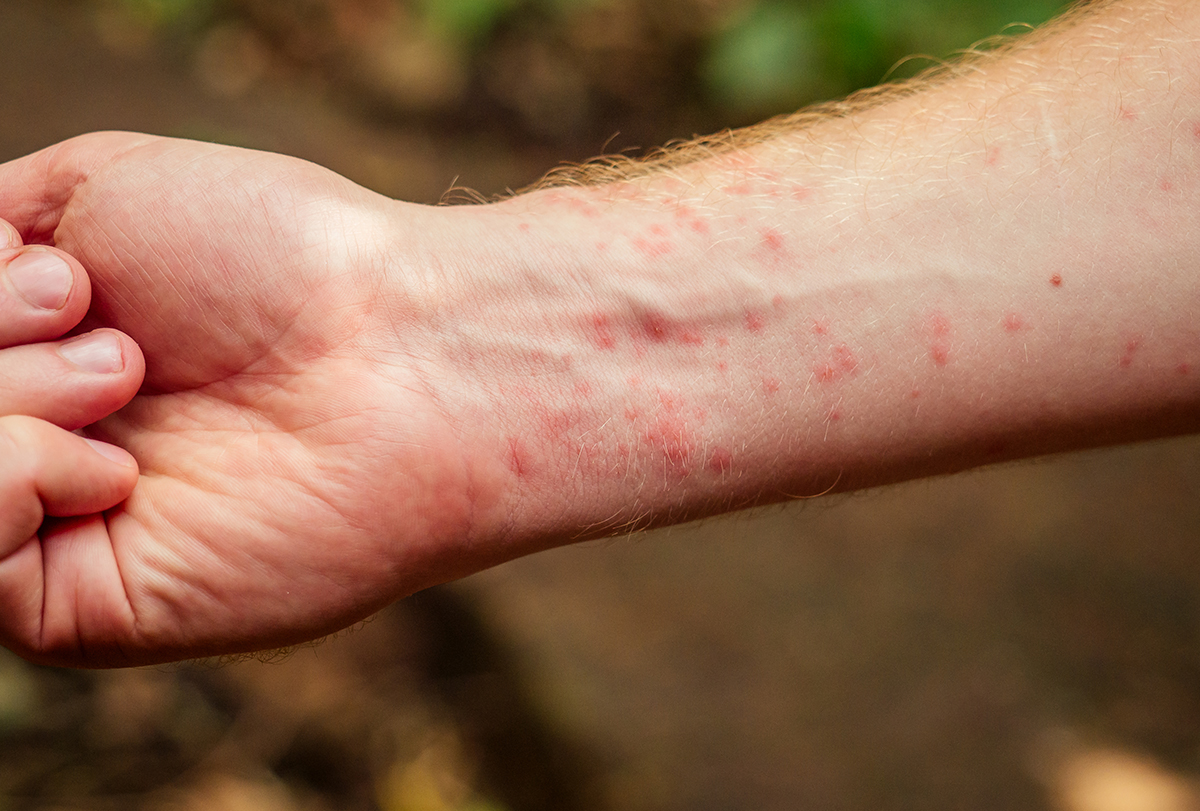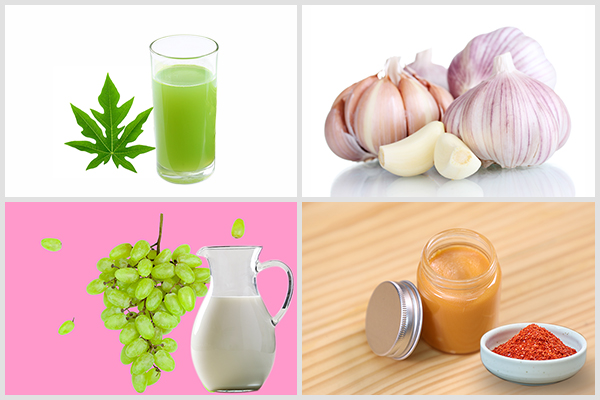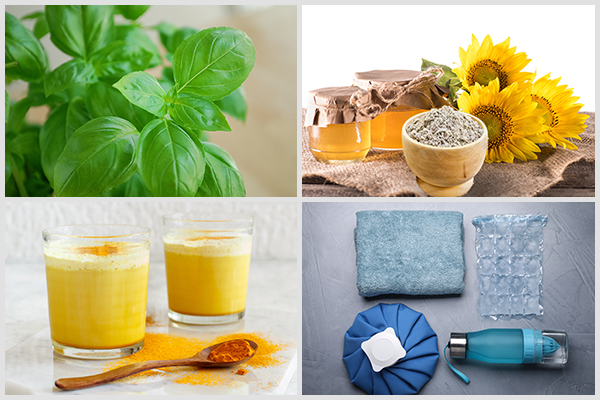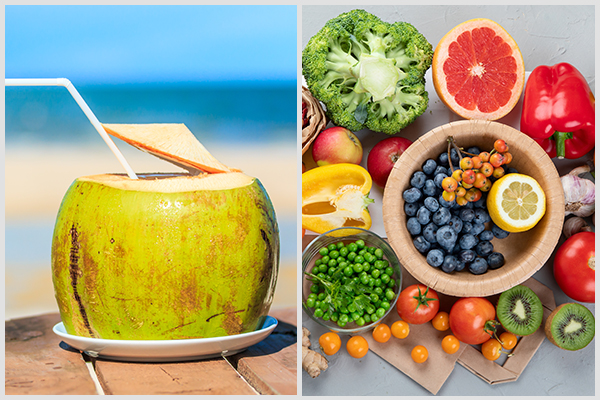In this article:
Chikungunya is a viral infection carried by Aedes mosquitoes, which spread it to humans through their bite. This is quite a debilitating condition that usually starts with a sudden onset of short-lived fever, followed by severe pain and swelling in the joints that can persist for days, months, or even years. (1)

Other common symptoms of chikungunya include muscle pain, headaches, nausea, fatigue, and rash.
In most cases, this infection becomes symptomatic 4–8 days after the mosquito bite, but this incubation period (the period between exposure to an infection and the appearance of the first symptoms) can last anywhere from 2 to 12 days. (2)
Chikungunya is particularly prevalent in Africa, Southeast Asia, India, New Guinea, Guam, and certain parts of Europe.
Home Remedies for Chikungunya
Here are some home remedies that may help to manage the symptoms of chikungunya:
1. Use papaya leaves
Papaya leaf extract exhibits considerable antiviral, anti-inflammatory, and antitumor properties that can help reduce the severity of chikungunya symptoms such as skin rash and joint pain. (3)
How to use:
- Thoroughly wash 10 fresh papaya leaves.
- Remove the long stem and central veins.
- Chop the leaves into small pieces.
- Put them in the blender with just enough water to make a liquid paste.
- Strain the juice and get rid of the pulp.
- Consume 2 tablespoons of this papaya leaf juice every 3 hours for 2–3 days or a week if the symptoms last longer.
2. Try using garlic
Garlic is another natural remedy that has been proven quite useful in managing chikungunya. It is replete with antioxidants, sulfur, and selenium, which help relieve pain and inflammation in your joints.
Plus, it helps your body fight off the infection quickly by building your immunity. (4)
How to use:
- Sauté 2 finely chopped garlic cloves in 2 tablespoons of sesame oil until they turn black and then turn off the heat. Let this garlic-infused oil cool down, and then gently massage it on your painful joints. Leave it on for a few minutes before washing it off. Do this twice daily.
- Include more raw or cooked garlic in your daily diet.
- Consult your doctor about taking garlic supplements.
3. Consume grapes with cow’s milk
Certain phenolic compounds found in grapes possess antiviral and antioxidant properties (5) that can ease chikungunya symptoms, especially when taken along with good-quality cow’s milk. This combo can help provide quick relief from fever and joint pain associated with this condition. (6)
Look for milk derived from cows that feed on naturally grown grass rather than chemically treated fodder.
How to use:
- Crush a few grapes and remove their seeds.
- Chew the grapes and keep sipping on warm cow’s milk while the grapes are still in your mouth.

4. Use cayenne pepper topically
The main active compound in cayenne pepper is capsaicin, which works as a powerful anti-inflammatory agent (7) and a natural pain reliever. Using it topically on your stiff, swollen, and tender joints can help provide instant relief.
It not only curbs inflammation but also temporarily numbs the targeted area by blocking pain signals from reaching the brain. This desensitizing effect makes you feel less pain, but it only lasts for a short period, so you may have to apply the remedy multiple times throughout the day.
How to use:
- Boil 3 teaspoons of cayenne pepper in water for 5–10 minutes on medium flame.
- Mix in 1 cup of olive oil/jojoba oil/almond oil.
- Gradually add ½ cup of grated beeswax while stirring it constantly until it melts and blends completely.
- Turn off the heat and put the mixture in the fridge for 10 minutes.
- Stir the mixture once again so that all the ingredients blend properly, and refrigerate it once more for another 10 minutes.
- Apply the mixture to the painful joints. You might feel a slight tingling sensation, especially if you have sensitive skin.
- Store the paste in an airtight container, and use it whenever you want for about 1–2 weeks.
Caution:
- Wear gloves while making this remedy to avoid getting cayenne pepper on your hands.
- Don’t touch your face, especially the eyes, while preparing this remedy or after using this remedy until you wash your hands properly.
5. Chew on some basil leaves
Basil is a medicinal plant with multiple healing properties that can help reduce chikungunya symptoms and accelerate recovery.
It is full of antioxidants that strengthen your immune system. Better immunity means your body will be able to overcome the infection more quickly and easily. (8)
Basil may help bring down fever and reduce inflammation, both of which are common symptoms of chikungunya.
How to use:
- Chew some fresh and clean basil leaves once or twice a day.
- Properly rinse 8–10 fresh basil leaves and put them in ½ liter of boiling water. Let the water boil until it reduces to half, and then take it off the heat. Filter the water, and drink it over the course of the day for a week.
6. Eat sunflower seeds and honey
Sunflower seeds are abundant in zinc and vitamin E, (9) both of which help boost immunity to facilitate speedy recovery from chikungunya.
Honey is credited with strong anti-inflammatory effects that can help alleviate the joint pain associated with this condition.
How to use:
Consume a mixture of powdered sunflower seeds and honey.
7. Drink turmeric milk
Turmeric is renowned for its therapeutic properties that can help treat various ailments including chikungunya.
Much of its healing potential is attributed to curcumin, which is the chief active ingredient in turmeric. It exhibits significant anti-inflammatory activity that may soothe the pain, swelling, and stiffness in your joints.
Plus, it acts like a natural medicine that controls high body temperature. (10)
How to use:
- Thoroughly mix ½ teaspoon of turmeric in a glass of hot milk so that it dissolves completely without forming any lumps. Drink this tonic while it’s warm two times a day.
- You can also consult your doctor about starting curcumin supplements.

8. Apply a cold compress
A cold compress is one of the most commonly used interventions for relieving joint pain (11) and inflammation caused by chikungunya. You can get it from your local pharmacy or make it at home.
The application of cold temperature numbs the underlying nerve endings and thus makes you feel less pain. This remedy provides instant relief but only for a temporary period, so you have to use it multiple times during the day, as and when needed.
How to use:
- Slightly crush a few ice cubes.
- Wrap them in a clean washcloth or small towel to make an ice pack.
- Place the ice pack over the painful area for 3–5 minutes.
Note: Don’t apply ice directly to the skin as it can damage the underlying tissue and even cause frostbite.
9. Drink coconut water
Patients with chikungunya are often recommended to consume plenty of fresh coconut water, which can help ease their symptoms and promote healing.
This refreshing drink is packed with nutrients, antioxidants, and other beneficial compounds that help curb inflammation in the body and relieve joint pain. Plus, it is known to detoxify the liver, which helps your body recover faster. (12)
Coconut water is one of the most widely used remedies for chikungunya and it also improves overall health.
How to use:
Consume 3–4 glasses of fresh coconut water throughout the day.

10. Follow a healthy diet
Chikungunya is a long-lasting condition that takes a serious toll on the body. Reeling with excruciating and persistent joint pain not only hampers your movement but also renders you weak and tired all the time.
Diet plays a critical role in managing and overcoming this highly debilitating illness. Patients are advised to consume high-fiber foods (13) that will give them a boost of energy, enhance their immunity, curb inflammation, and facilitate quick healing.
Experts lay special emphasis on following an alkaline diet that includes coconut water and green leafy vegetables to maintain an ideal pH level within the body, an important prerequisite for curbing pain and inflammation triggered by chikungunya.
Here are a few dietary recommendations when dealing with chikungunya:
- Increase your intake of vitamin C, which is a powerful antioxidant that can help bring down inflammation and bolster your immune system to defeat the infection.
- Squeeze half a lemon in a cup of water, and drink this mixture two to three times every day to increase your body’s alkalinity.
- Add more green leafy vegetables to your regular diet as they contain a lot of vitamin E and iron, both of which help promote healing.
- Green tea is replete with antioxidants that help your body fight the infection while also curbing pain and inflammation. Thus, consume 3–4 cups of this therapeutic tea daily until your condition improves.
- Limit your intake of animal-based products, refined grains, sugary and processed foods, and caffeinated and alcoholic beverages.
Prevention Against Chikungunya
No vaccine can provide you immunity against chikungunya. The only way to prevent this viral infection is to shield yourself from the mosquitoes that carry it.
Here are a few protective measures that can help you do that, especially when the disease is spreading in your area:
- Cover your body as much as you can by wearing full-sleeved tops, long pants, and socks during the day to avoid mosquito bites. Also, put on a hat when going out.
- Wear clothes coated with permethrin to ward off mosquitoes.
- Apply an insect repellent on all the exposed areas of the skin but not too close to the eyes and mouth. Use only a small amount around the ears. Put it all over your clothes as well. Choose a repellent that contains picaridin, DEET, lemon eucalyptus oil, or para-menthane-diol. Apply the insect repellant on top of your sunscreen. If you are using it in spray form, do not spritz directly on your face, but put it on your hands first and then apply it on the face. (14)
- Mosquitoes tend to breed in stagnant water. So, the first thing you need to do is to minimize natural and artificial water-filled containers around you. Keep your commodes covered, especially during the day, which is when chikungunya-carrying mosquitoes mostly attack their victims.
- Install insecticide-treated mosquito nets around your bed while you take your afternoon siesta to keep mosquitoes away during the day.
Final Word
Chikungunya often triggers extreme joint pain that may take a long time to completely go away.
You can try the above-listed remedies along with the doctor-prescribed treatment to manage your discomfort. This condition can seriously drain you out and hamper your movement. But instead of taking bed rest, try to stay as active as possible to maintain a full range of motion in your joints.
Try appropriate stretching exercises to reduce stiffness and inflammation around the affected joints. However, don’t overexert yourself; gradually build your activity level as the condition improves.
Moreover, it is very important to eat healthily and stay hydrated to gain energy and help your body fight the infection better.
- Was this article helpful?
- YES, THANKS!NOT REALLY


